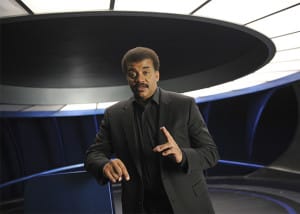Cosmos: A Spacetime Odyssey
Neil DeGrasse Tyson knocks it out of the park with Cosmos: A Spacetime Odyssey. The popular astrophysicist (who is quickly becoming the “face of space,” and who hosts Cosmos) takes us through an astounding journey in this 2014 documentary, combining practical lessons of science and space with a humanitarian goal to raise awareness about important subjects like climate change.
Here are 10 reasons you should watch Cosmos this year:
10. Cosmos will expand your mind. It’s fascinating.

Cosmos pounded my eyes, ears, and creative mind with incredible CGI graphics/special effects and actual images from space. In comparison to other space or earth documentaries, all of which I generally like, this one felt more real, relevant, and exciting than anything else I’ve seen.
Throughout the season’s episodes, I found myself dreaming about multiple time dimensions in my mind, restless as my conscious and subconscious worked tirelessly to comprehend the meaning of things like time distortion (which occurs at high speeds), and the near certainty of time travel.
My mind continued to race as I contemplated the incredible fortune of Earth, for having somehow having won the spatial lottery in manifesting ideal conditions for harboring life – while also beginning to comprehend that Earth is without doubt guaranteed to perish at some point in the distant future.
9. Neil DeGrasse Tyson really knows what he’s talking about.
Neil DeGrasse Tyson has been the Director of the Hayden Planetarium at the Rose Center for Earth and Space in New York City since 1996. He holds a BA in Physics from Harvard University (1980), an MA is Astronomy from the University of Texas at Austin (1983), an MPhil in Astrophysics from Columbia University (1989), and a PhD in Astrophysics also from Columbia (1991).
He has written the “Universe” column for Natural History magazine, has been appointed by the President of the United States to serve on the Commission on the Future of the United States Aerospace Industry, and also appointed to serve on the President’s Commission on Implementation of United States Space Exploration Policy, also known as the Moon, Mars, and Beyond commission.
In 2015, he received the Public Welfare Medal for his “extraordinary role in exciting the public about the wonders of science.” This is no surprise given the impact Cosmos: A Spacetime Odyssey has had around the globe, along with the many other media program he’s been involved with.
8. Cosmos makes science understandable and exciting for all of us.
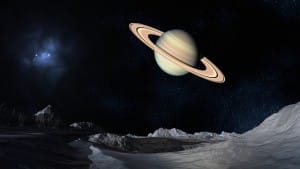
We learn about everything from greenhouse gases to supernovas and beyond in Cosmos, yet we are spared the uber-complex mathematical equations (mostly) and instead taught through easily understood analogies, demonstrations, and common-sense descriptions of how things happen in space, time, and reality.
In fact, we are even taught that some of the greatest scientists mankind has ever produced lacked mathematical skill! We are introduced to Michael Faraday, for example, who was raised quite poor and only quite luckily stumbled into his scientific career. His approach was primarily based on following his intuition via experimentation, which anyone can pursue regardless of education level.
7. You will learn about the stars, solar system, milky way galaxy, and beyond.
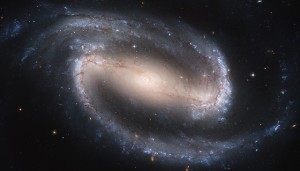
We also come to understand the deathly nature of comets and asteroids within our own solar system and surrounding galaxy, and are taught the importance of taking them seriously. Why? If a large enough comet or asteroid hits Earth, we could be wiped out like the dinosaurs were (65 million years ago, by the way – Earth has harbored life for a long time!).
What’s even scarier is to realize how frequent such impacts occur. Even within the past few years, Russia saw a major impact with the Chelyabinsk Meteor that exploded in the atmosphere and sent a huge shock wave down to the city below. To put the nature of this explosion in perspective, it was the equivalent of 500 kilotons of TNT, or 20-30X more powerful than the atomic bomb Little Boy detonated over Hiroshima in 1945.
6. You will learn about black holes and dark matter.
As scary as comets, asteroids, and meteors may be, they are nothing compared to super-massive black holes or dark matter – both of which are yet to be fully understood.
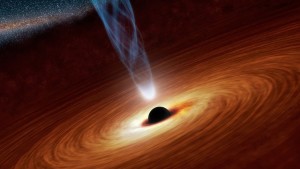
There are also “primordial black holes,” which formed shortly after the Big Bang and are extremely small – as small as a single atom, yet containing the mass of Mount Everest. Try to think about that for a moment, and then consider the amount of mass contained within “supermassive black holes.”
Supermassive black holes contain the mass of more than a million suns. It is believed that every big galaxy contains a supermassive black hole at its center, binding the star systems around it together. How big are they? The one at the center of our very own Milky Way Galaxy is called Sagittarius A, and holds the mass of approximately 4 million suns – yet would fit in a ball about the size of our sun.
As for dark matter, we’ve learned by process of elimination that it must exist due to our understanding of gravity and its relationship with mass. We can’t see it, but we know it’s there because of the distance between galaxies and their spatial relationships.
5. You will learn the incredible history of Planet Earth, and put time in perspective.
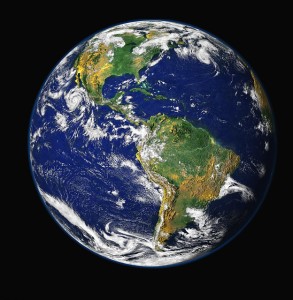
What comes after? Well, next in the hierarchy there are Epochs, Periods, Eras, and finally Eons. These do not have exact numbers attached to them like a decade (10 years) or a century (100 years), but rather describe large and long periods of millions of years at a time.
Right now for example, we’re in the Holocene Epoch of the Quaternary Period of the Cenozoic Era of the Phanerozoic Eon.
During our present eo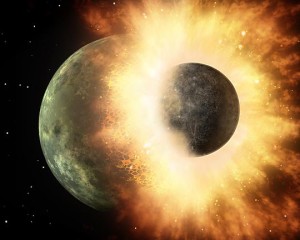
For instance, it has been postulated that a large Mars-like object struck Earth some 4.5 billion years ago during the Hadeon Eon – forever changing the fate of the earth, and leading to the formation of what we now call the Moon.
4. Cosmos puts things in proportion, helping you understand the scale of space.
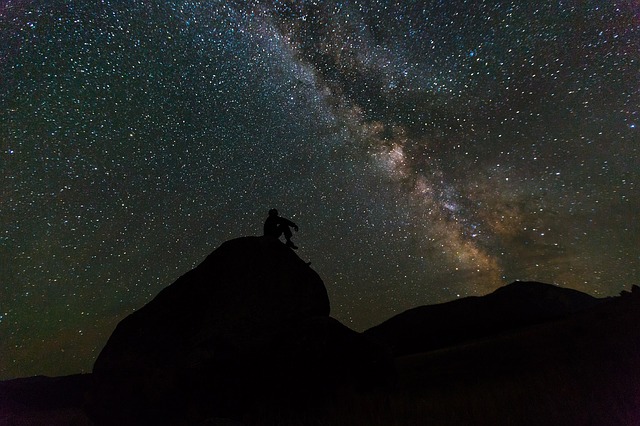
Let’s start with the distance between the Earth and the Sun – about 93 million miles, or 8 light minutes away (it takes sunlight about eight minutes to reach Earth). It would take a commercial jet traveling at around 550 mph approximately 19 years to reach the sun, or the fastest manned rocket (40,000 km/hr) about 156 days.
By contrast, we are just 238,900 miles from the Moon, which is why we can get there in a matter of days from Earth.
To put this in perspective, consider the distance between the Sun and the nearest star, Proxima Centauri – 4.37 light years or about 25.689 trillion miles.
Yet this is still nothing in comparison to the distance between our Milky Way Galaxy and the Andromeda Galaxy (these are the two giant galaxies in our Local Group) – they are 2.5 million light years apart from each other. In layman’s terms, if the entire Milky Way Galaxy was Los Angeles, Andromeda would be New York.
Going another step farther, consider that our Local Group is just one small part of the Virgo Supercluster, which contains thousands of clusters of galaxies – and our Local Group is considered a small guy in the mix.
Beyond this is what we call the Observable Universe, which our current view allows us to see extending more than 10 billion light years in all directions.
3. Cosmos gives us the scientific truth about climate change – and might help us save the planet.
Cosmos sends us an important and profound message about climate change. An incredible number of independent scientific studies have now confirmed without any doubt that our planet is currently experiencing dramatic climate change, and that it could lead to permanent and fatal consequences for the human race.
The answer is simple – we as humans must collaborate in slowing down climate change and eventually achieve a method for living on this planet that leads to a sustainable equilibrium for is climate.
At the present moment, this means we need to do things like:
- Explore and identify alternative sources of clean energy.
- Decrease carbon dioxide (CO2) and methane (CH4) emissions from manufacturing, crude oil production, and transportation.
- Decrease global animal products consumption, since bovine flatulence is a contributing to a major methane (CH4) epidemic and pronounced greenhouse effect.
- Stop cutting down rain forests and start planting more trees.
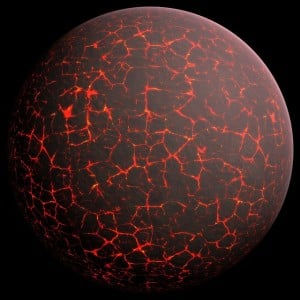
This is believed to have happened on Venus a very long time ago, vaporizing its oceans and eventually raising the surface temperature to 872 degrees Fahrenheit, where it rests today. Lead melts at this temperature and certainly no life can be sustained at it.
Climate change has always been a controversial issue, but what’s important is that we are committed to getting to the bottom of it – either way and in an unbiased fashion. What matters is seeking the truth, identifying the risks, quantifying what must be done or changed (if anything), and ultimately ensuring the protection of our Planet for the future.
2. Cosmos is a family-friendly, all-ages show including cartoons!
In addition to the fact Cosmos is easy to understand (well, mostly!) – it’s also family-friendly and great for kids with its frequent cartoons.

In our modern day of satellites, cable television, and cell phones that are more powerful than our computers were just years before, it’s easy to forget that technology has only recently achieved such a rapid acceleration. Many of history’s great scientists made their discoveries using nothing more than their mind, some experimentation, and perhaps a library!
It’s inspiring to see what humans are capable of even without the advances of modern technology, including all of the scientific discoveries that were made in the past, leading up to the present.
1. Cosmos will give you a new perspective on life.

We don’t know with certainty whether or not intelligent, self-aware life exists elsewhere in the universe, but we do know that we should be grateful for this opportunity that has been given to us here on Planet Earth. We’ve won the lottery of the Universe in terms of establishing a civilization our capabilities today.
It’s also interesting to consider how Earth is really just a tiny, near-invisible speck of dust in the grander scheme of our Solar System – and yet smaller still when viewed on the scale of the Milky Way Galaxy, Local Group, Virgo Supercluster, and beyond.
For all the importance we place on our daily activities, and for all the emotion we have surrounding the apparent meaningful things in our lives, at the end of the day – we are insignificant when compared to the Universe around us.
Right now as you read this, supernovas are exploding elsewhere in space, black holes are forming, the universe is expanding, and intelligent life might even be colonizing an Earth-like planet somewhere far away.
Many important things are yet to be discovered, as they lay on the horizon of science and space. Do wormholes exist? Will we ever know what happens inside of a black hole? Is the Universe truly infinite, and are there parallel Universes out there? What is the meaning of it all, and what explains this epic existence of reality, time, and space in which we’re a part?
During my lifetime and yours, we may never find out for sure – but with interesting shows like Cosmos: A Spacetime Odyssey, we can at least imagine and wonder.

